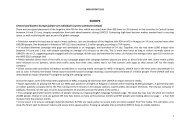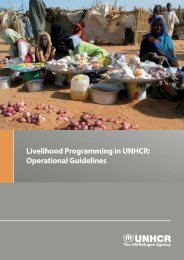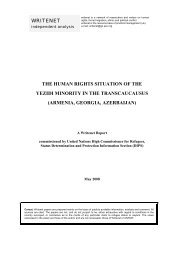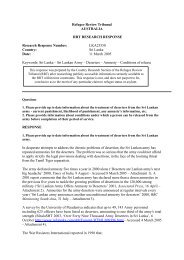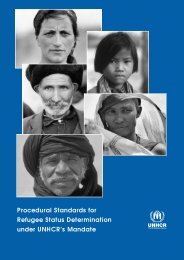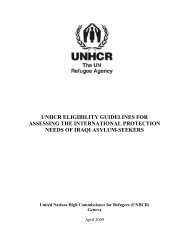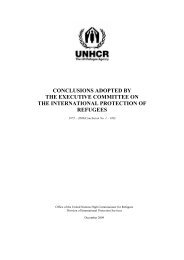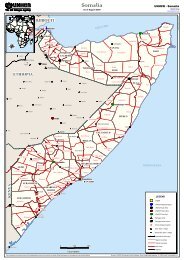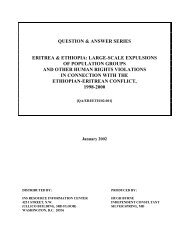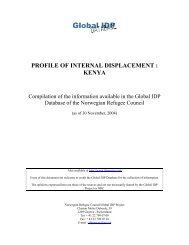UNHCR's ELIGIBILITY GUIDELINES FOR ASSESSING THE ...
UNHCR's ELIGIBILITY GUIDELINES FOR ASSESSING THE ...
UNHCR's ELIGIBILITY GUIDELINES FOR ASSESSING THE ...
Create successful ePaper yourself
Turn your PDF publications into a flip-book with our unique Google optimized e-Paper software.
considered to be well-founded. To the extent that the harm feared is from non-State actors,<br />
State protection is on the whole not available in Central and Southern Iraq. Moreover, state<br />
agents are themselves accused of carrying out violence and other forms of human rights<br />
transgressions. Consequently, an asylum-seeker should not be expected to seek the<br />
protection of the authorities, and failure to do so should not be the sole reason for doubting<br />
credibility or rejecting the claim.<br />
Persecution<br />
There is no definition of the term “persecution” in international law. Whether or not any<br />
measure amounts to persecution must be determined in light of all the circumstances of the<br />
case taking into account the personal profile, experiences and activities of the applicant<br />
which would put him or her at risk. A threat to life or freedom, other serious harm or<br />
serious violations of human rights would constitute persecution. Severe discrimination<br />
could also amount to persecution, in particular where livelihood is threatened. Measures<br />
which are not of a serious character by themselves may amount to persecution on<br />
a cumulative basis.<br />
Acts of extreme violence and serious human rights violations, as in large parts of Iraq<br />
today, would rise to the level of persecution. There is no requirement under refugee criteria<br />
that an individual has to be “targeted” for persecution in order to qualify for refugee status.<br />
Violence perceived as generalized in nature, including against civilians, can often be linked<br />
to one of more of the 1951 Convention grounds. Car bombs, killings, torture, kidnappings,<br />
and other types of physical harm would amount to persecution. An asylum-seeker’s failure<br />
to identify the perpetrator of violence should not be considered as detrimental to his/her<br />
credibility.<br />
Other forms of persecution are also present in relation to particular groups. They include<br />
restrictions on the ability to practice one’s religion (as a result of legal restrictions and/or<br />
threats of violence), severe discriminatory treatment, harassment and intimidation rising to<br />
the level of persecution, and domestic violence, including “honour killings.”<br />
Link to a Convention Ground<br />
In order to fall within the refugee criteria, there must be a nexus between the relevant act or<br />
measure and at least one of the Convention grounds. In the context of Iraq, the most<br />
relevant Convention grounds are political opinion and religion. The main religious divide is<br />
between the Sunnis and the Shi’ites. At the same time, given that the insurgency is Sunnidriven<br />
and the Government is predominantly Shi’ite, there are also clear political overtones.<br />
The ground “membership of a particular group” is also clearly applicable in some cases.<br />
Grounds for persecution are often overlapping. Even in instances of common criminal<br />
activity, victims are often targeted, at least in part, because of their religious or ethnic<br />
backgrounds or membership in a particular social group.<br />
17




